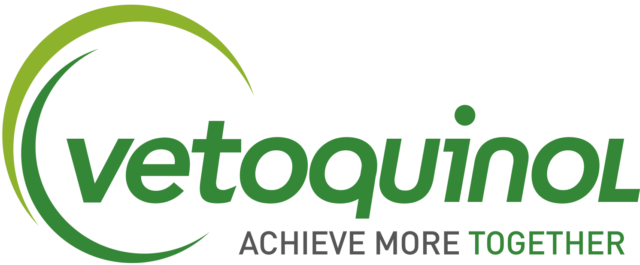1. Simple structure leads to good results
Published September 2015
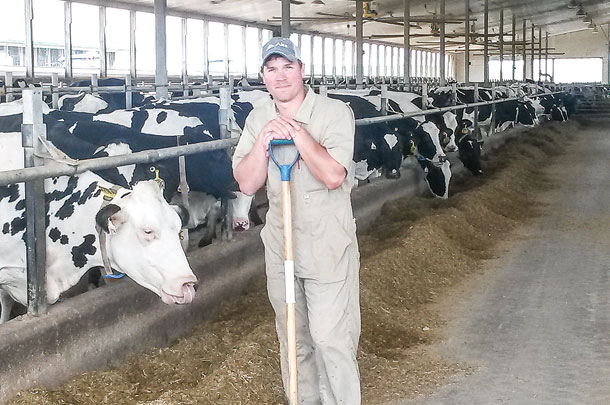 This ration profile broke down the feed ingredients and nutrient analysis used in the milking cow ration at Ikendale Farms Ltd. in Walkerton, Ontario.
This ration profile broke down the feed ingredients and nutrient analysis used in the milking cow ration at Ikendale Farms Ltd. in Walkerton, Ontario.
Tyler Kuntz and his family care for 330 purebred registered Holstein cows and grow all of their own forages, straw and grains. They work with Brad Whytock, dairy specialist at Grand Valley Fortifiers Ltd., to identify the right ration for their herd.
The farm prefers to buy ingredients – like dry corn, distillers grains, cottonseed, soybean meal and canola meal – in bulk and then mix everything together on the farm. Buying in bulk allows Kuntz to book feed purchases six months to a year ahead of time to take advantage of low prices.
By using this method, they have the flexibility of switching proteins and minerals as needed.
“We can adjust the ration as need be depending on how good the forages are and the protein I can get on the farm,” Kuntz says.
Editor’s note: There was an error in the original article. It read, “Cows are dried off at 150 to 160 days in milk.” The correct information is cows are dried off 50 to 60 days before their due date. The farm’s average DIM is 155 to 160.
As harvest wraps up for the year, which low-priced commodities are you looking to secure for feeding in 2016?
“We’re looking at sugar beet pulp or pressed beet pulp at around $55 per tonne. In our area, the forages had a very good year for quality and yield. Toxins are low in corn silage, too. It is a huge advantage when that happens, helping a lot with reproduction. The need for properly priced byproducts or commodities goes down with such a good forage year.
“I’m going to book DDGs today [late October] for six months at less than $200 per tonne. I like that price. I’m watching soy meal and canola meal closely with intentions of booking six months soon. Last year, I missed that low soy meal price opportunity. It was quick. Cottonseed is not on my radar today because of price and availability.”
—Tyler Kuntz, dairy producer, Ikendale Farms Ltd.
2. System trains calves to automatic feeders at Henria Holsteins
Published September 2015
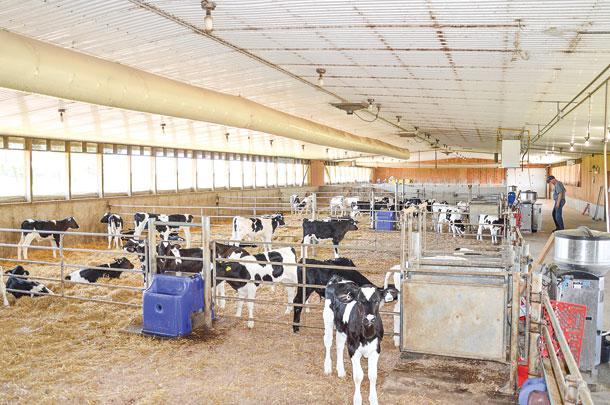 Henria Holsteins Inc. is a family-owned dairy business in Grey County near Conn, Ontario. Henk and Maria Pastink, their daughter Reba and son Gerrit are the proud owners of this large modern facility that features a 50-cow rotary parlour with up-to-date freestall barns and handling systems. They milk 600 cows, have 100 dry cows and more than 900 heifers of various ages.
Henria Holsteins Inc. is a family-owned dairy business in Grey County near Conn, Ontario. Henk and Maria Pastink, their daughter Reba and son Gerrit are the proud owners of this large modern facility that features a 50-cow rotary parlour with up-to-date freestall barns and handling systems. They milk 600 cows, have 100 dry cows and more than 900 heifers of various ages.
The Pastinks raise their calves and replacement heifers carefully, providing a spacious, bright and airy barn. Calves are fed whole milk from fresh or treated cows as well as any excess-to-quota milk. Robotic feeders dispense the appropriate amount of milk allowed for each calf. Calf starter is available free-choice.
Days before being penned in groups of 20 per feeder, the calves are given 6 litres of colostrum within their first 12 hours. Within a day, they are moved to the calf barn and put into individual pens for two or three days, where they are hand-fed to ensure they are drinking 6 litres per day and off to a good start.
Once drinking adequately, they go to a training pen where they learn to use the robot feeder. This pen has one robot for five or six calves.
Which reports do you look at from your automatic calf feeders and how often do you review them?
“We do not have automatic reports generated from KalbManager [the feeders’ software program]; however, we do look at the program at least three times a day. First thing in the morning, we look to see that everyone has drank and been at the stations. Then we look at drinking speed."
"We like to see 1 litre per minute. The next time we check the computer is in the afternoon, where everyone has consumed half of their allotted intake, and again check the drinking speed. The first sign of an oncoming illness is a reduced drinking speed."
"At the end of the day, the last thing we do is take a peek at the computer to see that everyone is visiting the stations. That is done after we have washed the system and put the next batch of whole milk into the supply tank to ensure all is well for overnight.”
—Maria Pastink, dairy producer, Henria Holsteins Inc.
3. Re-think the transition cow diet
Published August 2015
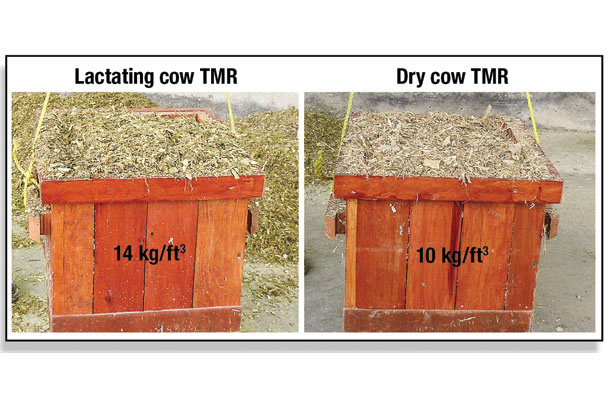 It has been found that controlling energy consumption through the incorporation of low-energy ingredients in the dry cow diet has improved transition cow health. Some producers also feed a higher-energy close-up diet with the intention of improving the transition from the low-energy dry cow diet to the milking cow diet.
It has been found that controlling energy consumption through the incorporation of low-energy ingredients in the dry cow diet has improved transition cow health. Some producers also feed a higher-energy close-up diet with the intention of improving the transition from the low-energy dry cow diet to the milking cow diet.
Bill Woodley reported researchers found “little evidence the two-group strategy offered any advantage compared with the single-diet (controlled-energy high-fibre) strategy.”
Therefore, Woodley suggested implementing a one-group feeding strategy for dry cows while finding ways to improve the transition between the prefresh and postfresh diets to optimize DMI in the fresh period. He provided five strategies that can be used to ensure a smooth transition from one diet to the next.
What else could a producer do to help ease their cows from a pre-fresh to post-fresh ration?
“The transition phase can lead to many headaches on dairy farms and often contributes to the bulk of the workload for the producer who is just trying to keep their cows ‘going’ after freshening.
“Feeding diets that are similar in type and texture will help ease this transition. The rumen microbiota will be relatively stable as compared to making a dramatic shift in the diet. For example, many producers are nervous about adding haylage to the dry cow diet, yet the fresh cow will be consuming haylage.
The ‘fear of haylage’ arises from potential problems with excess potassium (K). Haylage can often provide a cost-effective protein source and, when coupled with low-K ingredients, works very well.
“Reducing particle size of the dry cow TMR mimics the ‘look and feel’ of the milking cow TMR. This may increase passage rate and will reduce sorting. Cows are boring – they don’t like change.”
—Bill Woodley, Ruminant Technical Services Manager, Shur-Gain
4. Reclaiming system saves sand bedding at Rosebrin Farms
Published January 2015
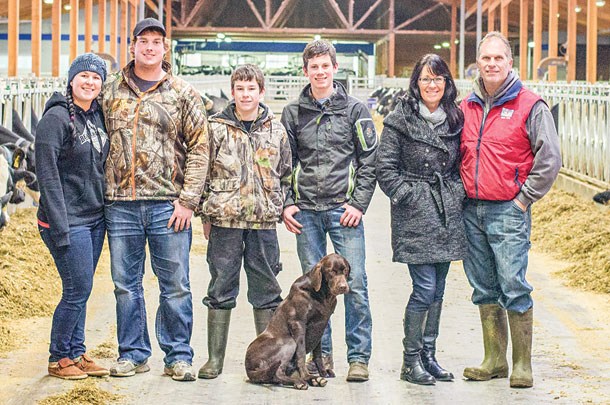 Rosebrin Farms Ltd., located near Chilliwack, British Columbia, in the beautiful Fraser Valley, is the home of Brad and Lisa Roseboom and their family. The dairy herd consists of 450 head of commercial Holstein cattle. About 200 cows are milking at any given time; the remainder are dry cows and youngstock.
Rosebrin Farms Ltd., located near Chilliwack, British Columbia, in the beautiful Fraser Valley, is the home of Brad and Lisa Roseboom and their family. The dairy herd consists of 450 head of commercial Holstein cattle. About 200 cows are milking at any given time; the remainder are dry cows and youngstock.
The Rosebooms recently built two new barns. The first is a drive-through barn for the milking herd. Completed in June, the new barn has 220 freestalls, which are deep-bedded with about 6 inches of sand. The second new building, behind the dairy barn, holds the sand reclaiming system.
Alley scrapers run every three hours, moving manure with sand into a 2-foot-wide flush flume, which deposits it into a 12-foot-square, 10-foot-deep pit. Once it arrives in this pit, the slurry is pumped through an 8-inch line to the sand lane.
Brad borrowed the idea for this from his friend and neighbour. The sand lane is a 100-foot-long, 11-foot-wide corridor with a slant of 0.75 percent. This is sufficient to allow the sand to settle while the manure runs off with the liquids.
Wastewater from the milking parlour is recaptured, pumped into the pit and run over the sand lane to further clean the sand. Once a day, the waste that is left in the pit is agitated and transferred to a large lagoon. The entire system is computer-controlled.
What, if anything, would you change or modify in your sand separation system?
“We have been using the sand lane since June 5, 2014. It has worked incredibly well; we haven't changed one thing since we started running it. The low cost of building this system and the maintenance has been minimal. Other farmers in the area are doing the same thing. We are collecting 80 to 90 percent of the sand, and our somatic cell count has been low at 106,000 to 170,000 so far this summer and into fall.”
—Brad and Lisa Roseboom, dairy producers, Rosebrin Farms Ltd.
5. How long will my milking robot last?
Published June 2015
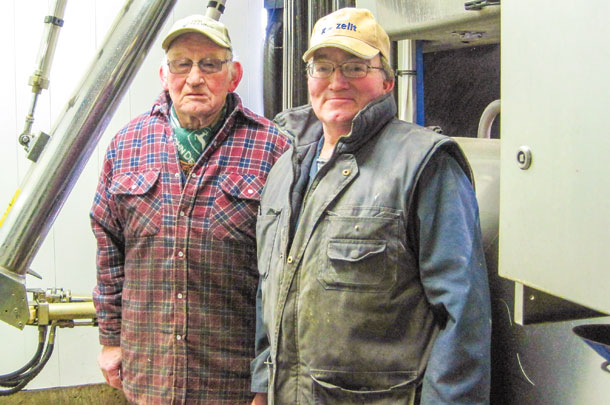 Like any form of milking equipment, automatic milking systems can be quite an investment. To calculate if the investment is the right one to make, it is important to know how long the equipment will be operational.
Like any form of milking equipment, automatic milking systems can be quite an investment. To calculate if the investment is the right one to make, it is important to know how long the equipment will be operational.
“In the earlier years, we all predicted that new robotic milking systems would last approximately 10 to 15 years. But now we are wondering how much longer these robots can last. Robots that were installed in 2002 still look brand-new; their shining stainless steel still reflects like the first day it was moved into the barn,” Dean Miller wrote.
He shared examples of two sets of dairy producers that were able to utilize upgrades to make robots older than 10 years continue to work for them.
What can robot owners do to keep their equipment working as long as possible?
“Quite often in the sales process we are asked: ‘How much time will I save if I purchase a robot?’ This is a delicate question because the years have proven that the more time you spend on your investment, the longer it will last and the more effective it will be with your cows."
"The first step for longevity is maintenance. Most companies have a strategic maintenance program designed to eliminate untimely service calls. It is very important that this maintenance program be followed as closely as possible. Most farmers choose to let their dealership do their maintenance, while others will do this themselves."
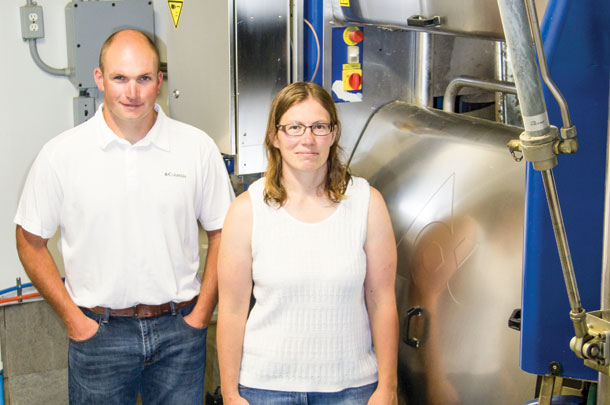 "It does not matter who is doing the maintenance as long as it is done. If you choose to do it yourself, be careful, as certified dealership technicians know what to look for when maintaining a robotic system. A proper maintenance schedule will add years to your robot’s life.
"It does not matter who is doing the maintenance as long as it is done. If you choose to do it yourself, be careful, as certified dealership technicians know what to look for when maintaining a robotic system. A proper maintenance schedule will add years to your robot’s life.
“Another aspect is upgrades. Most people think upgrades mean the robot has physically changed in some way. Not true. Many upgrades happen inside the panels. These changes are designed so that your robot will last longer and add enhancements. Always ask what new upgrades might be available for your robot. This will keep it current and once again will add years to your robot’s life.”
—Dean Miller, milking robot product manager, Norwell Dairy Systems
6. A look into nutritional factors affecting robotic milking
Published January 2015
When shifting from conventional to automatic milking, dairy farms must also shift the way their cows are fed. Mark Rose helped to alleviate questions and concerns regarding this transition by providing real robot nutrition experience from before, during and after startup in an automatic milking system. These tips will aid producers in transitioning their feeding program and cows into new ways of doing things.
In the article, you mentioned, ‘To assess necessary nutritional changes, review the herd’s performance and visit behaviour.’ What should producers and nutritionists be looking for in these reports following start-up of robotic milking?
“In a free-flow automatic milking system, the main motivation for cows to visit the robot is maintaining the nutrient balance between the partially mixed ration (PMR) and robot pellet, where 80 to 85 percent of the total nutrient requirement comes from PMR and the balance from the robot pellet.
“Shortly after startup, producers, their nutritionist and local farm management supporter should monitor the basic indicators such as number of milkings, refusals and milk yield. If the PMR becomes too nutrient-dense, these numbers will decrease and may increase the number of fetch or collect cows, as more cows could get their nutrient requirements from the PMR, losing motivation to visit the robot.
“As cows freshen into the robot system, it’s also important to monitor peak yield, rumination, bodyweight, and fat-to-protein ratio. This gives nutritionists insight into the transition and fresh cow program, and also information to fine-tune feed tables to ensure cows perform to their genetic potential.”
—Mark Rose, nutritionist, Lely
7. 5 criteria for breeding robot-ready cows
Published October 2015
As more and more dairy producers adopt a robotic milking system, they are looking to make genetic changes within their herd to better suit the changing needs of the farm. Jean-Dominic Caron, a robot milker adviser for Ciaq, outlined the five criteria he considers when breeding robot-ready cows. Those five criteria are:
- Somatic cell count and resistance to mastitis
- Feet and legs
- Udder selection with a focus on teat position and length
- Milking speed
- Temperament
8. Improve the nutritional value of milk with flaxseed
Published September 2015
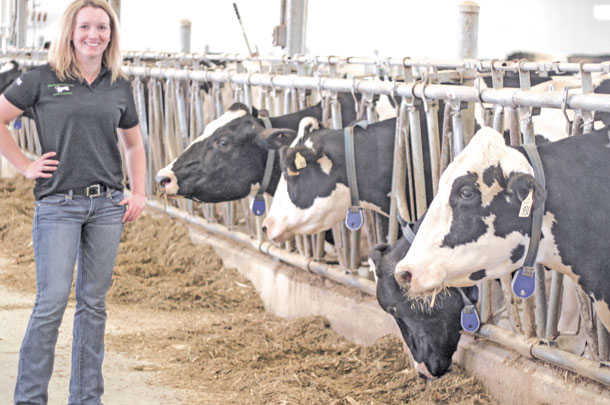 Janna Moats, a master’s degree candidate at the University of Saskatchewan, shared the findings of her research to help determine a practical and economically feasible strategy for the production of omega-3 dairy products. The study used unprocessed and extruded flaxseed products as the main omega-3 source in the animals’ diets.
Janna Moats, a master’s degree candidate at the University of Saskatchewan, shared the findings of her research to help determine a practical and economically feasible strategy for the production of omega-3 dairy products. The study used unprocessed and extruded flaxseed products as the main omega-3 source in the animals’ diets.
The results show the fatty acid composition of the milk was dramatically altered among the flaxseed treatments. “Most commercial milkfat in Canada contains only 0.5 percent total omega-3 fatty acids.
Our trial was able to achieve levels as high as 1.18 percent of total omega-3s in the milkfat simply by feeding cows extruded flaxseed. In addition to the increased levels of omega-3s, we also saw a threefold increase in another human health-related fatty acid, conjugated linoleic acid, as well as a decrease in the level of saturated fatty acids,” Moats wrote.
She also found the extruded flaxseed diets performed better than that with the unprocessed flaxseed. The unprocessed flaxseed was poorly digested by the animal and may be more difficult for producers to store and handle compared to extruded flaxseed.
9. How to choose the right pellet for a robotic dairy
Published September 2015
Pellets are a common feed used on robotic dairies, but the makeup of pellets can vary greatly.
“One of the biggest myths we hear within the industry is that the pellet is the ‘candy’ that brings the cows to the robots. This statement has some merit – we do need a quality, palatable pellet – however, we need to take a look at the bigger picture and understand that the pellet is an essential part of the whole ration,” wrote Dan Davis.
He went on to outline the process of making feed pellets and what comprises a good-quality pellet. He also discussed how robot barn flow and basic feed fundamentals are important factors when selecting the type of pellet to feed.
Are pellets the best option for robot feed or could you use other feed types?
“Alternative feeds such as corn gluten pellets, coarse-rolled corn or a corn and roasted-bean blend can be an attractive ‘cheap’ alternative to using a pelleted feed blend for robotic operations. However, there are some major drawbacks to these feeds."
"Shrink, extra fines and separation of mixes in the bin are hidden costs that add up quickly, not making these feeds such an attractive alternative. Also, with gluten pellets, the consistency of quality can vary greatly as well."
"According to a global data summary from Cumberland Valley Analytical Services, corn gluten pellets can range up to 7 percentage points on starch and 5 points on neutral detergent fibre (NDF). Pellets offer greater flexibility for a balanced ration, limit the amount of waste or ‘shrink,’ and overall, a much more consistent product.”
—Dan Davis, dairy consultant, Big Gain Inc.
10. Areas to consider when planning a robotic milking facility
Published August 2015
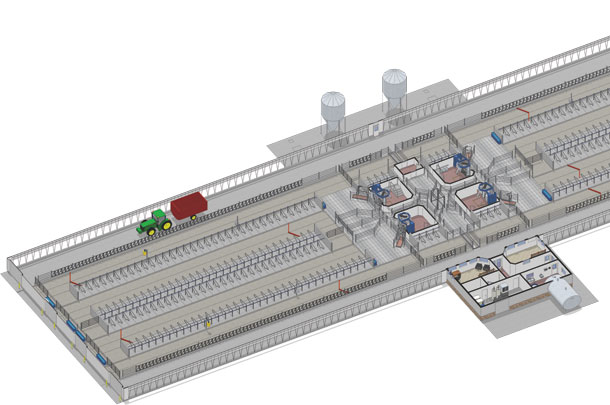 Jeff Prashaw provided a rendering of a typical freestall barn layout for an automatic milking system. He highlighted various areas and features that work well to assist producers with the planning and design of a robotic milking facility.
Jeff Prashaw provided a rendering of a typical freestall barn layout for an automatic milking system. He highlighted various areas and features that work well to assist producers with the planning and design of a robotic milking facility.
“A successful robotic milking operation requires sound farm and herd management practices by dairy producers who are willing to work with technology and manage change effectively. You are encouraged to work with a qualified architect or contractor in consultation with your veterinarian when designing your robotic milking facility,” Prashaw wrote.
Editor’s note: There was a typo in the original article. The recommended height of the neck rail above the stall surface should be 50 inches, not 40.
What are some non-traditional features you’ve designed into robotic milking facilities upon request of the owner?
“Robotic dairy operators are very proud of their new investment and really enjoy showing it off. It’s not uncommon for them to request nicely appointed, enclosed viewing rooms above the robots so guests can have a birds-eye view of the facility. Not necessary from a functionality standpoint, but really nice to have when a bus full of visitors shows up.
“Then, of course, there’s the odd request for a tricked-out office suite, fitted with full kitchen, living space with 4K LED TV and wet bar. For these dairies, the cows and people are probably equally as comfortable.”
—Jeff Prashaw, project design manager, automatic milking architect, SCNA, DeLaval Inc.
11. Student-managed farm offers real-life experience
Published May 2015
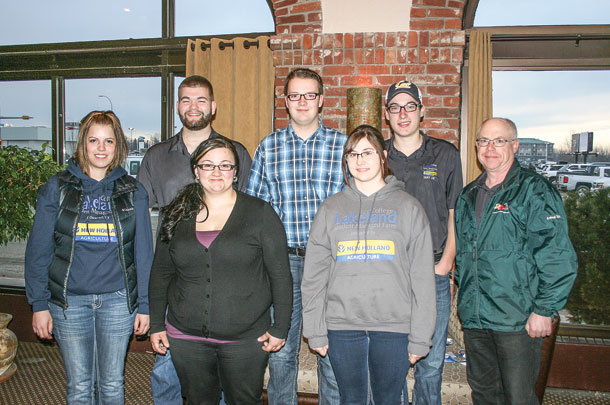 Students at Lakeland College, Vermilion, Alberta, participate in a two-year animal science program. The first year of the program covers basic animal science courses with dairy electives, while the second year has more intense courses focused on dairy management, housing, nutrition and hoof trimming.
Students at Lakeland College, Vermilion, Alberta, participate in a two-year animal science program. The first year of the program covers basic animal science courses with dairy electives, while the second year has more intense courses focused on dairy management, housing, nutrition and hoof trimming.
To complement the classroom work, the college has a dairy farm with a mixed herd of Jerseys and Holsteins. Students manage the farm with help from faculty members and farm staff.
“It is a unique opportunity in Canada, with science and applied training all at one location,” says Blair Dow, dairy instructor at Lakeland.
The students work as a team to make management decisions on the farm. They also have the opportunity to help out with everyday jobs on the dairy such as milking, breeding, hoof trimming and consultant visits.
Current classes are working on a special project to design a new dairy facility to replace the existing barn and double-three herringbone parlour built in the 1980s.
How are the plans for the new facility progressing?
“Lakeland College has secured a unique partnership with Alberta Milk that will ensure the college’s ability to be a leader in diploma-level training (dairy focus) and dairy-related short courses in a modern, 120-cow facility. The Student Managed Farm (SMF) dairy team for 2015-2016 is led by Daniel Isenschmid of Grunthal, Manitoba."
"The team has reviewed the recommendations made by last year’s team and is currently in the process of designing each component of the new facility. The plan to date has robotic milking for 60 cows and a parallel parlour for milking the other 60."
"The students, in cooperation with Lakeland College staff, are currently meeting with builders and dairy equipment providers to research the current technology available for dairy housing and management. As mentioned by the SMF team members at the recent college open house, ‘This is an exciting time to be a student at Lakeland College!’”
—Blair Dow, dairy instructor, Lakeland College

12. New Hire Morgan Overvest, Holstein Canada
Published August 2015
This summer, Morgan Overvest started in a new position as on-farm data project coordinator for Holstein Canada. In this position, she is responsible for conducting a review of all automated systems and data made available to producers and their industry advisory teams.
She will then communicate with industry members and producers to bring forward ideas for how to integrate this type of data and software with existing Holstein Canada services to make the use of these services easier for members.
Name one exciting experience you’ve had on the job thus far.
“Throughout the first five months in this role, I have had the opportunity to travel across Canada to discuss Holstein Canada services and the future of on-farm data collection with many of our keen producers and industry partners, while working closely with our registrar, Pascal Lemire.
“Additionally, I was fortunate to have the opportunity to attend the 2015 Dairy Cattle Improvement Industry Forum, co-hosted by CDN and Holstein Canada in September. This event featured great speakers from all areas of the dairy breed improvement industry as well as input from two forward-thinking dairy producers."
"These two Holstein Canada members shared their views on the future of data exchange, discussed future needs on their farms and challenged industry partners to meet these needs. It was an inspiring day filled with lively discussion about the future of the dairy industry in Canada – and overall a very fitting start to this exciting position.”
—Morgan Overvest, on-farm data exchange project coordinator, Holstein Canada
13. Andrew Campbell cultivates social opportunity with #farm365
Published June 2015
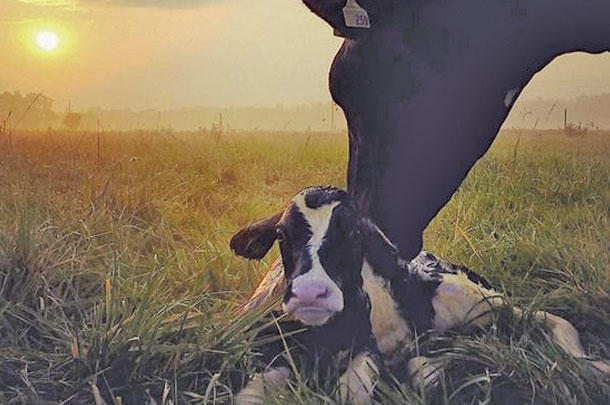 Andrew Campbell, the “Fresh Air Farmer,” is dedicated to farming, writing and social media, not necessarily in that order. After pursuing a career in media, he returned home to Bellson Farms in southwestern Ontario’s Middlesex County, where he and his wife, Jessica, work alongside his parents, Wayne and Phyllis.
Andrew Campbell, the “Fresh Air Farmer,” is dedicated to farming, writing and social media, not necessarily in that order. After pursuing a career in media, he returned home to Bellson Farms in southwestern Ontario’s Middlesex County, where he and his wife, Jessica, work alongside his parents, Wayne and Phyllis.
The family farm is a dairy operation, where about 50 cows are milked in a tiestall barn with a pipeline. The cows are registered Holsteins, on DHI and type-classified. They cash crop, working about 400 acres, growing corn, soybeans, wheat and hay.
Andrew had been using social media for several years and decided to set a challenge for 2015. He started on Jan. 1 with a goal of posting one picture each day, either from his farm or farm-related, along with the hashtag #farm365.
Of the daily photos you’ve posted thus far in 2015, which ones have received the most response?
“The picture that has been shared the most was from Sept. 2. What had been a foggy morning was finally clearing just as a calf was born in the pasture.”
—Andrew Campbell, dairy producer, Bellson Farms
14. Communication efforts aid father and son in dairy transition
Published January 2015
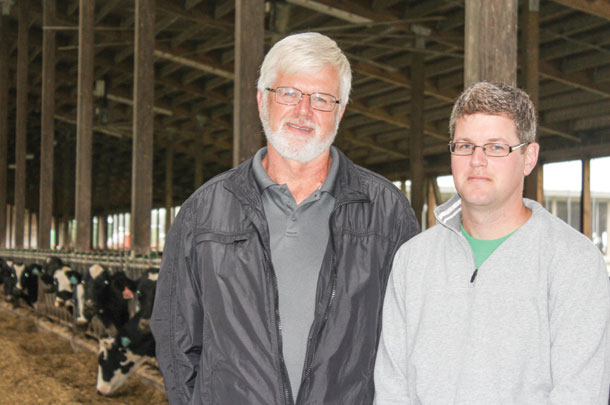 As Tom Verhoog began transitioning his family dairy, Sutom Holsteins, in Ontario to his son, Mike, the two of them decided to enlist the help of Mark Andrew Junkin, an ag mediator whose specialty is teaching farm families how to make decisions together.
As Tom Verhoog began transitioning his family dairy, Sutom Holsteins, in Ontario to his son, Mike, the two of them decided to enlist the help of Mark Andrew Junkin, an ag mediator whose specialty is teaching farm families how to make decisions together.
With Junkin working as mediator, Tom and Mike identified some animal and production metrics to track and agreed to sit down monthly and review the metrics together. Each monthly review follows a regular agenda, determined at the outset by Tom and Mike and facilitated by the mediator.
It includes a review of the metrics, but the discussion expands to cover multiple issues. Some of the agenda items include: Identify three low-lying metrics and devise a solution to improve each one, identify one way to improve daily chores, discuss personal education goals for the quarter, and give one compliment and one pet peeve for each family member.
Which tips from the ag mediator do you continue to use on a regular basis?
- It is hard to work together as farm family members. We are at different points in life with different experiences and goals.
- Work hard at building trust. If you say or agree on something, stick to it. It is so easy to mess up with each other. Having a bucket of trust to borrow from is worth a lot.
- Continue to be accountable to each other. Having someone to monitor and keep everyone accountable helps.
- Work hard at communicating. Work harder at listening. Sometimes we need someone else to help us understand what the other is saying.
- Understanding that you do not really understand what the other member is thinking or feeling keeps us listening more attentively and patiently.
- We need to remind ourselves that our life is so much more than the farm. Our children need to remember that the farm is an awful big part of who we are.
- We need to remember that we had the satisfaction of building the farm. Now it is the next generation’s turn to have that same challenge to build their world. Our children need to remember to not take for granted the opportunity they have. They need to earn the respect and prove their abilities to manage a business that has taken many years to build. Listen to the advice from someone who has been through it before and has made many mistakes.
- It is hard to work together as family members, but it is so rewarding and satisfying to see the next generation being excited to build their own world.
—Tom Verhoog, dairy producer, Sutom Holsteins
15. (TIED) Is fertility compromised if you select for improved immunity?
Published October 2015
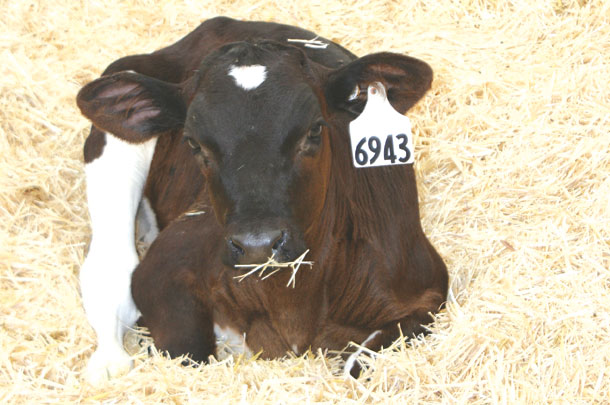 Now that the dairy industry is able to identify high-immune response (HIR) animals based on their estimated breeding value, it is important to ensure that selection for HIR does not impact milk quality or farm profitability.
Now that the dairy industry is able to identify high-immune response (HIR) animals based on their estimated breeding value, it is important to ensure that selection for HIR does not impact milk quality or farm profitability.
Bonnie Mallard reported, “In a Canada-wide study, no differences were detected in 305-day milk yield, protein yield, fat yield or overall lifetime profitability in HIR cows compared with low- or average-responder cows.”
In terms of reproduction, there is a positive correlation with daughters of HIR sires having improved pregnancy rates and daughter calving ease.
While it is possible to genetically improve animal health without compromising economically important traits like production and reproduction, are there any lesser important traits that have a negative correlation with high immune response?
“High immune response identifies healthier animals based on breeding values of protective immune response traits. This has many indirect benefits since poor health negatively impacts animal performance. Our original research showed benefits not only for infectious diseases but also for metabolic disorders, which are linked to the immune system via various interconnected pathways."
"Similarly for fertility, poor health can negatively impact reproduction, so it makes sense that healthier cows are less prone to fertility problems. On the production side, correlations with immune response were essentially zero, indicating that it is possible to improve health and not compromise production."
"In fact, healthier cows have a better chance to express their production genetic potential. Producers are well aware of what happens to cows’ daily production when they get sick. To date, we have not found any consistent and substantial negative correlations with traits that are currently selected for in dairy cattle.”
—Bonnie Mallard, Ontario Veterinary College Department of Pathobiology, University of Guelph
15. (TIED) Farmers fight false information about supply management
Published October 2015
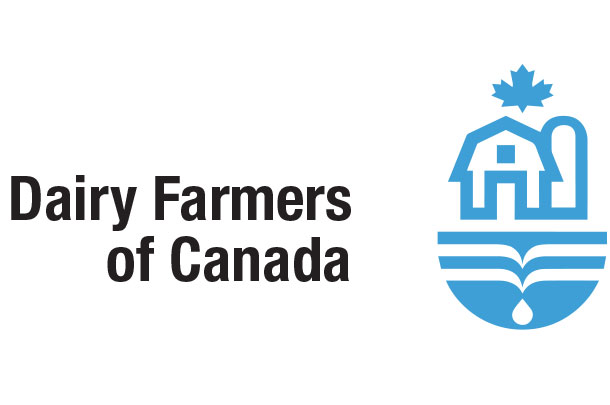 Whether discussing retail food prices or international trade, media outlets seem to enjoy talking about supply management programs. As things really heated up the last several months, Dairy Farmers of Canada teamed up with Chicken Farmers of Canada, Egg Farmers of Canada and Turkey Farmers of Canada to lay some truth on the table about a program that is important to their members.
Whether discussing retail food prices or international trade, media outlets seem to enjoy talking about supply management programs. As things really heated up the last several months, Dairy Farmers of Canada teamed up with Chicken Farmers of Canada, Egg Farmers of Canada and Turkey Farmers of Canada to lay some truth on the table about a program that is important to their members.
Why is it important for Dairy Farmers of Canada to debunk myths about supply management?
“For the average Canadian, supply management is an abstract concept that is rarely a part of their everyday lives. The public generally has little awareness of it, and the media tends to misrepresent it – especially in light of international trade negotiations. It can be extremely polarizing and easily misunderstood.
“For Canadian dairy farmers, supply management represents the bedrock of our industry. It allows us to weather economic storms and resist market volatility. It plays a role in ensuring the high quality and sustainability of our milk, which Canadian consumers have come to expect. Without supply management, forces beyond a farmer’s control could put out of business the type of caring family farms consumers want to see.
“Communicating with the public to help separate fact from fiction is therefore critical. To ensure continued public support of our industry, we must help them understand it better – that means debunking the myths.” PD
—Dairy Farmers of Canada

